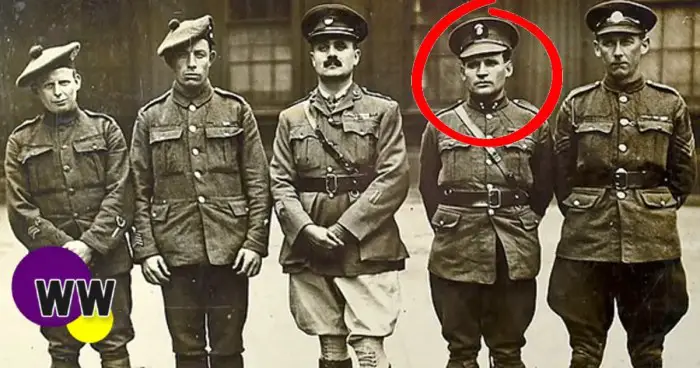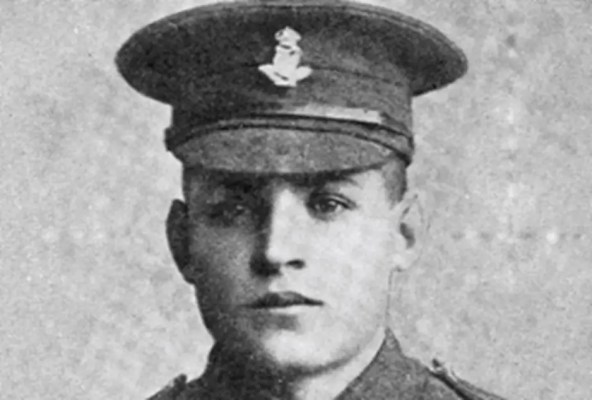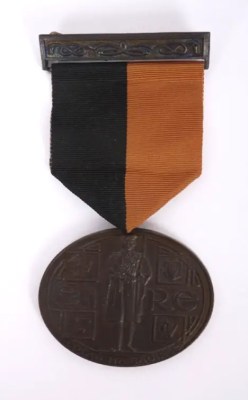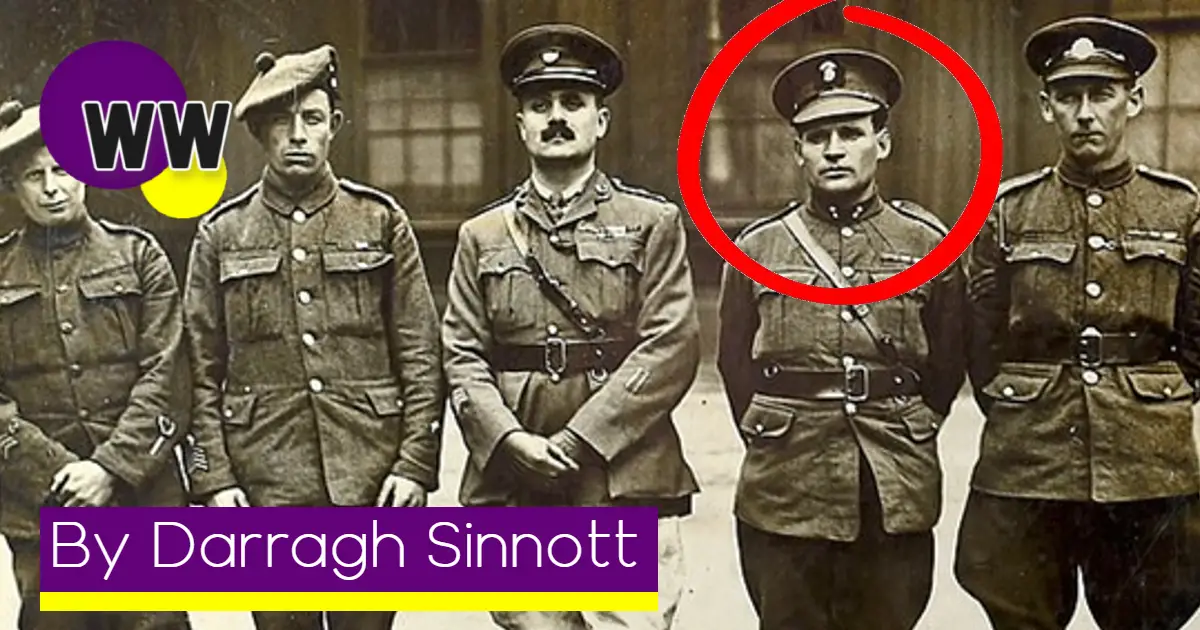The period of 1914-1923 was a period of near constant war in Ireland…
From the Wexford MP John Redmond appealing to the young men of the country to play their part in “…the defence of the highest principles of religion and morality and right…” and to enlist in the British Army to join the raging war in Europe.
Swiftly followed by the transformative event of Easter Week 1916 which called men to arms for their nation and for the cause of Irish sovereignty, this rebellious fervour of course culminated in the War of Independence which was sparked in January 1919 not seeing its end until July of 1921.
Even still the Irish nation was not at peace as between 1922-1923 the ruinous and brutal Civil War divided a nation and turned brother on brother.
It is very hard to believe that one man could serve with distinction in all of these conflicts, that they could shoulder a gun in three events which moulded a nation. Yet one such man does stand out as a notable example of continued gallant service on the Battlefield, a man who had bestowed upon him the highest military honour of the British Army, a man who served without fear in the fight for the freedom of his own nation as an intelligence officer, and a man who took up arms in defence of a Treaty which divided the nation.
That man was native of County Wexford and his name was Martin Doyle.

Humble beginnings:
Martin Doyle was born on the 25th of October 1894, and he was born in Gusserane to Larry and Bridget Doyle.
There was no tradition of military service in the Doyle family, and Martin’s father Larry was himself a farmer. Aged only six, Martin and his family upped roots and moved to Mary Street in New Ross. Martin was one of 7 siblings, having six sisters.
By all accounts, he prospered academically and was a very capable student although records show he left primary school in fourth class. This was not uncommon for the time. Aged only 15, Martin decided he wished to join the British Army, perhaps he yearned for the adventure and excitement which he may have believed the army would provide. Or, perhaps, he yearned for the ceremony and honour of army life, of the chance to win glory for himself on the field of battle.
It is also very conceivable that Doyle not coming from any great wealth may have also seen a position in the British army as more lucrative and indeed a more stable and reliable income. In 1881 an Irish farm labourer could’ve expected to earn around £25.000 per year whereas a Private in the British Army could expect to earn £40.00 a year. On top of this very appealing wage, one could rely upon lodgings, clothing, and food from the Army and no doubt, it was more than what most jobs could guarantee.
From Enlistment to India:
Whatever the reason at such a young age, Martin was determined that he would serve in the British Army. On St. Stephen’s Day 1909 Martin enlisted. At the time, he had to lie about his age claiming he was 17 in order to become eligible to serve.
His father was livid with his decision; so strong was his resolve he sold a cow to buy a son out of his service. Regardless of all this, Martin defiantly reenlisted. He signed up at Kilkenny Barracks as a Private in the 18th Royal Irish Regiment which predominantly drew its membership from Kilkenny, Wexford, Tipperary and Waterford.
If Martin had enlisted hoping to explore the world, he would not be disappointed as his first posting was to India. One would imagine that this would be something of a great shock to a man who had lived all his life mostly confined to his native town, yet Martin thrived in this structured military environment and threw himself into life within the regiment.
Doyle’s interest in academia which had shown itself in his earlier school life once more became apparent as he enrolled in courses and night classes. Doyle was a very keen sportsman and his sporting prowess was put on display as he became the Regiment’s Lightweight Boxing Champion. He allegedly also won an elephant in a raffle run by the locals as part of the prize. Having served in India and achieved so much within his regiment it is easy to lose sight of the fact that come 1914 and the outbreak of the First World War, he was but 19 years of age.
Service in World War I:
Due to the outbreak of the conflict, Martin returned from India to Ireland and was sent to Europe with the Royal Dublin Fusiliers to brave the wretched and perilous conditions of France of the trenches.
Even though he was only a relatively young man throughout his five years of service, his best qualities had become apparent and it was clear that he had great leadership qualities. As such, without delay, he was appointed to Sergeant in his new regiment.
He rose through the ranks of his regiment until he attained the rank Company Sergeant at which point he was once more transferred to one of the other renowned Irish regiments of the British Army, the Royal Munster Fusiliers. Here, Martin Doyle served with distinction throughout the course of the war on the Eastern Front, however, his valiant acts which won him great fame occurred toward the end of the war.

In March of 1918, Martin and his unit served in Hattenville near Normandy. Martin’s unit advanced steadily toward the German trench, but with the nature of trench warfare, this left them horribly exposed to machine gun fire, such was the risk one took when attempting to cross ‘no man’s land’.
This risk only added to the bravery of Martin’s actions. While making the crossing, a German machine gun opened fire on Martin’s unit from an abandoned, dilapidated barn. Martin and his men with bayonets in their hands ran gallantly toward the hail of bullets which spurted out of the German machine gun, yet despite the near insurmountable odds against them, the bayonet charge proved successful.
His unit took the barn and the machine gun. When attempting to fulfil their initial objective of taking the enemy trench, Martin and his unit were captured and Martin was roughly received by his captors who did not treat him too kindly. A successful counter attack from his regiment broke the German line and took the trench, and in doing so, they freed their comrades from German captivity. The Free Press later published an article in which Martin gave a first-hand account of taking the barn:
“We had to cross about 1,000 yards of open country, exposed to terrible shell and machine-gun fire. A big barn stood in the ground between us and a fight ensued to take possession of it. I called for volunteers and went over the top at the charge, but when I reached the barn, I was alone. I bayoneted the two Germans I found there, seized the machine-gun, and took possession of the barn,” Martin Doyle said.
The Victoria Cross:
However, his greatest display was yet to come. The fearless bravado which Company Sergeant Doyle would display at Riencourt on the 2nd of September near the Somme would be sufficient to place him among of the 27 men native to the 26 counties of Ireland to win Britain’s premier military honour, the Victoria Cross for his service in WWI.
Due to heavy casualties among the officers of his company, command of the company fell to Martin and he proved himself to be more than able for the burden of command.
His display that day seems more akin to something out of a highly dramatized Hollywood film as opposed to the real life heroics of an officer in battle, yet the valour of New Ross native Martin Doyle was very much real. He first saw that some of his men had become ensnared by the enemy without much chance of escape.
In order to relieve them, he led a group of men through enemy trenches and managed to neutralise many German soldiers within and broke the German line which surrounded his comrades. He carried a wounded officer to safety under heavy fire.
Not one to revel in his own victory, Martin set about spotting where his man could be best used in the field to relieve struggling soldiers. His eyes were drawn to a tank which was under severe pressure as a large group of German soldiers tried to commandeer it.
He rushed in with his unit once more under heavy fire and relieved the tank routing the unit which surrounded it and halting the advance of another German unit. This brief period of fighting had left many men wounded; the tank was a magnet for enemy fire and a machine gun at close range opened fire on the tank rendering it impossible to bring the injured to safety.
In this instance, Martin Doyle singlehandedly rushed to the machine gun took it and took three prisoners. He once more carried wounded man to safety and again, he was under intense fire.
The Germans did not merely accept these defeats on the field and launched a mass counter attack, however Martin, who was still in command, not only held his line against the advance, but he pushed the Germans and taking a large amount of prisoners too.
He showed great suitability to the leadership role he was thrust into and showed great valour through his actions. Perhaps, the Official Statement released to announce Martin had been awarded the Victoria Cross summed it most aptly:
“Throughout the whole of these operations, Doyle set the very highest example to all ranks by his courage and total disregard of danger”.
Martin Doyle was given a hero’s welcome as returned to New Ross following the war in March of 1919, greeted by colourful bunting and banners which bore the words ‘Welcome to the New Ross hero’.
Two months later, Company Sergeant Martin Doyle travelled to Buckingham Palace where on the 8th of May 1919, he was awarded the Victoria Cross, which is the highest military honour that can be awarded by the British Army for valour shown ‘in the face of the enemy’.

King George V and his wife Queen Mary awarded the New Ross native with the prestigious award in question. After 9 years of service in the British Army, Martin stepped down soon after. He married Charlotte Kennedy in November of 1919 and the two lived at no. 18 Mary Street in New Ross.
Joining the fight back home:

Martin Doyle may have served with the British Army, but he bore no loyalty to the British Crown or to the British Empire. He was a proud Irishman and desired to see an end to British rule in the country.
In October of 1920, Ireland he joined the Irish Republican Army which had been formed by the First Dáil Eireann in January 1919. Martin served at great risk to himself as an intelligence officer in the Mid Clare Brigade of the IRA, he carried out his duty from Ennis. By all accounts, he was an exemplary officer, doubtless his years of his military mind, his experience in Europe, and his deep knowledge of British military protocol and tactics made him a great asset to the IRA especially in an intelligence capacity.
Funnily enough, even while a member of the IRA, he was unafraid to travel to London in the old British Army uniform of the Royal Munster Fusiliers. At this same time, he was fighting behind the scenes for the Irish Republic.
A month after joining the IR, he was seen in London representing the Royal Munster Fusiliers at the unveiling of a Cenotaph in Whitehall. He was also supposedly present at Westminster Abbey in November of 1920 at the interring of the unknown warrior. Likewise, he also attended a garden party in 1929 thrown in Buckingham Palace for the recipients of the Victoria Cross.
Following the end of the War of Independence, Doyle sided with Michael Collins and the Pro Treaty side of the Civil War. It must have been a relief to Martin Doyle to be back in the field serving as a soldier in the National Army as opposed to being an intelligence officer.
No doubt, he was a valuable asset to the National Army throughout the course of the war.
He served in the thick of the fighting during the Civil War being posted to Waterford, Kilkenny, which was where he had first been posted with the British Army, South Tipperary, and Limerick. While serving in Limerick in 1923, Doyle received a bullet wound to the hand from an Anti-Treaty Volunteer.
Life in peacetime:
Martin continued his service in the Irish Army until 1937 when he was offered a position by Guinness Brewery as a security guard. The Irish Army at the time could not give him a pension and the job at Guinness was a pensionable one. As such, when the time came o leave the Army, he had to make a choice for his future. He could not continue his service indefinitely.
Doyle’s Army record spoke very highly of him though. It said that he was ‘an excellent NCO, a very good Vickers machine gun and rifle instructor, and someone who could not be replaced without serious inconvenience to the service’.
He served in the Army Reserve for a year and a half and left his life of military service behind him in 1939. Unfortunately Martin’s post-military career was to be short lived as he passed away in Sir Patrick Dun’s Hospital on the 20th of November 1940 aged only 46 after contracting polio.
Although he had spent most of his military career serving the Ireland, whether through his time in the IRA or his 15 years and 5 months in the Irish Army, he was buried in Grangegorman, Dublin, a British Military cemetery. Notably, his honours and titles within the British Army were also listed on his gravestone.

Yet nonetheless the achievements of Martin Doyle over his career were exceptional. He received not only the Victoria Cross, the highest military honour of the British Army, but he also received the Military Medal, one of 90,279 Coronation Medals issued for the Coronation of King George VI.
He posthumously received a medal for his service in the War of Independence making him the only man to win both the Victoria Cross and a service medal for the War of Independence.

His Victoria Cross is in the Lord Ashcroft medal collection. Many commemorations have been held for one of the most remarkable yet unknown figures in Wexford history.
Company Sergeant Doyle was at the heart of many commemorations for the centenary of the ending of the Great War. In February 2020 up to 200 people were set to march in a colour procession to commemorate the man once described as ‘the New Ross hero’.
His status lives on and Wexford will never forget one of her most extraordinary sons, Martin Doyle.
Sources:
Hundreds to march in Martin Doyle commemoration – Independent.ie
The man who fought for three armies: British, IRA and Free State (irishtimes.com)
Fascinating Wexford History, Volume 1, Des Kiely, Parsifal Press, 2019
Read also:
Remember to submit your news to Wexford Weekly! To advertise on our socials or website, email our team at info@wexfordweekly.com


